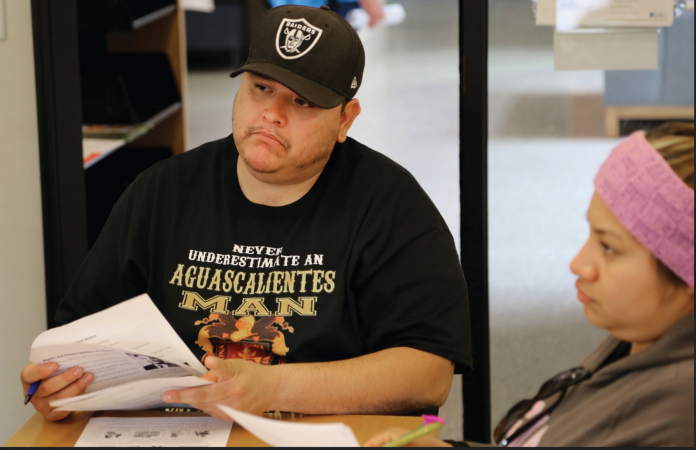The candidates in this year’s presidential campaign have spent hours debating the subject of immigration. But how many of us actually understand the naturalization process?
According to Jennifer Gagliardi, citizenship action coordinator for Santa Clara County and U.S. citizenship class instructor at Gilroy and Morgan Hill libraries, “the paperwork is very, very, complicated.”
Those who wish to apply for U.S. citizenship begin by completing the N400, the naturalization application, and then submit it to the United States Citizenship and Immigration Services (USCIS).
Vanessa Sandoval, director of immigration legal services, at Services Immigrant Rights and Education Network (SIREN), a nonprofit agency that provides immigration services in Santa Clara County, explained that USCIS is the agency that grants refugee status, asylum status, legal permanent resident status, and other temporary statuses to undocumented immigrants who have entered the United States.
“And underneath their umbrella is granting naturalization to immigrants who qualify,” she said.
“The entire process entails submission of the form N400, and then fingerprints taken by USCIS, and then an interview. At the interview there is what is called the history and civics exam that all aspiring naturalized citizens must take on.
“It’s about the history and civics of the United States and there are 100 questions in total, and the exam must be taken in English. Also the day of your interview the person is asked 10 questions with an immigration officer, and that is in English as well,” Sandoval said.
“So here, in Silicon Valley, it’s approximately five months from the time you submit, to the time you get called in,” Gagliardi said. “A month after that you’re going to go back for your oath ceremony. So it would be maybe five to six months from the time you send in your N400, to the time you raise your hand and make that promise.”
For a $100 fee, SIREN offers naturalization representation to those preparing to apply for citizenship, a process many feel is overwhelming.
“That fee can be waived for people who are experiencing a financial hardship,” Sandoval said. “We do not refuse services for anyone for lack of payment. We do have a nominal fee, but for the most part, most of our clients are served free of cost.”
The processing fee for immigration is $680, which covers processing of the application and submission with the N400 form to immigration.
However, before applying for citizenship, the individual must first be a legal permanent resident for five years and have completed forms and paid fees of $450 or more to apply for their green card.
“It really does take a lot of community education to let people know what are the benefits of citizenship,” Sandoval said.
Gagliardi believes citizenship provides a feeling of community.
“They’re more aware of their rights and they have a better understanding of who they are in American culture,” Gagliardi said.
For the undocumented immigrant, or a person who enters with a visa and overstays the visa, Sandoval explained, the wait time for processing their application is currently years, if not decades, due to the backlog.
“For the undocumented, it’s nearly impossible to get on the right track and become a U.S. citizen or a legal permanent resident, even if you have very close family members who are U.S. citizens,” Sandoval said.
Gagliardi agrees. “It’s really difficult, sometimes if you come here undocumented and they say, OK, you have to get in line and wait. Well that’s a 15-year line!”
From her interaction with her clients, Sandoval believes that no one wants to break the law.
“Everyone wants to have the right to be here legally, the problem is that for many people that opportunity just isn’t available under current immigration laws.” Sandoval said.
According to statistics compiled by the Migration Policy Institute, (migrationpolicy.org), the number of migrations to the United States has actually dropped off in recent years.
“Especially when the conversation at the national level about immigrants isn’t welcoming, and fueled with anti-immigrant rhetoric, we’ve actually seen decreases of the migration of people into the United States,” Sandoval said.
Sandoval believes that there is a direct correlation between undocumented immigration into the U.S., and the restrictions of our current immigration laws.
“I’m a firm believer that if our laws were reflective of our labor needs, and of the needs of the immigrants across the world, we would have less undocumented immigration,” Sandoval said.
“If there was a way for people to come here legally without a doubt they would choose that process as opposed to coming here undocumented.”














